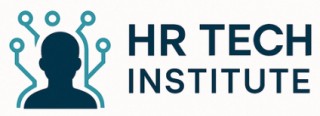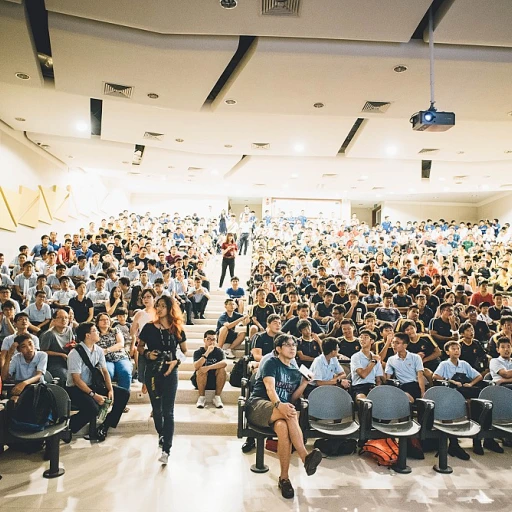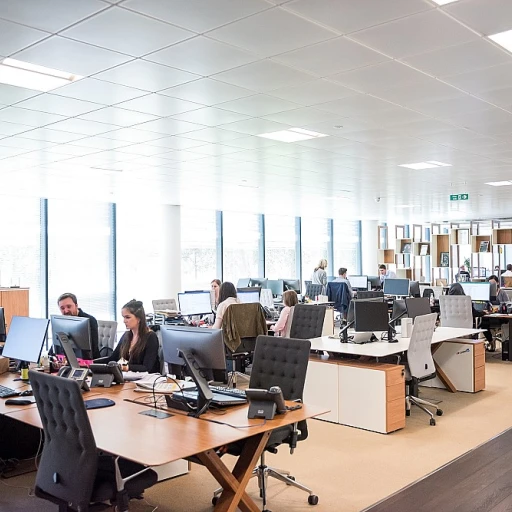
The Role of HR Tech in Shaping Organizational Culture
The Influence of HR Technology on Organizational Practices
In recent years, the integration of human resource technology has increasingly shaped the organizational culture of modern workplaces. As companies navigate the interconnected worlds of digitalization and globalization, HR tech plays an essential role in molding the fabric of organizational behavior and dynamics.
HR technology tools, thanks to advancements in data analytics, are providing new insights into workforce dynamics and employee engagement. With effective implementation, organizations can harness these tools to foster a work environment that encourages both collaboration and individuality among employees. This evolving landscape allows management to anticipate changes and manage conflict resolution more adeptly.
A critical aspect of utilizing HR tech includes understanding leadership styles within the organization. By gleaning insights from data garnered through these tools, teams can improve communication channels and enhance job satisfaction, contributing to a positive company culture. Employees feel that their voices are heard, their performance evaluated fairly, and opportunities for professional growth are cultivated.
Effective leadership and decision making in organizations play a pivotal role in shaping and reshaping organizational behavior. Within this arena, the application of change management becomes crucial. The ability to swiftly adapt to evolving workplace scenarios ensures that both leadership and employees align with the organization's goals, enhancing overall organizational dynamics.
To delve deeper into how organizational culture and dynamics are intricately connected, you can explore the concept of span of control in HR tech, which sheds light on how teams function and adapt in various organizational structures.
Leveraging Data Analytics for Improved Workplace Dynamics
Utilizing Data Insights for Enhancing Workplace Synergy
In the ever-evolving landscape of organizational dynamics, data analytics is emerging as a pivotal tool, reshaping how we understand workplace behavior. By leveraging data-driven approaches, businesses can gain deeper insights into collective and individual employee engagement, paving the way for more informed decision-making processes.
Data analytics helps organizations measure and assess various metrics related to employee performance and job satisfaction. This facilitates the management in identifying patterns, predicting outcomes, and implementing strategies that can drive positive change within the workforce. Understanding these dynamics offers executives a clearer picture of how organizational culture influences behavior, thus refining the overall work environment.
- Assessing Performance: Human resources departments can use analytical tools to track employee performance trends over time, enabling them to proactively manage talent and optimize team outputs.
- Enhancing Communication: Data can reveal communication bottlenecks within teams or departments, providing insights that help foster a more collaborative workspace. These insights aid in conflict resolution and improving interaction among employees.
- Supporting Change Management: Analytics offer valuable foresight into how changes in organizational policies might affect employee behavior and workplace dynamics, allowing leadership to mitigate risks effectively.
Furthermore, comprehensively understanding employee behavior through centralized data collection encourages organizations to tailor their approaches, ensuring employees feel valued and heard. This enhancement of the work environment not only boosts employee satisfaction but also, importantly, drives improved organizational performance.
Companies keen on exploring alternatives to traditional HR platforms can read more about adaptable HR tech solutions that cater to individualized needs and support strategic growth initiatives.
AI and Machine Learning: Transforming Employee Interactions
Revolutionizing Employee Interactions with AI and Machine Learning
In the ever-evolving landscape of organizational behavior, AI and Machine Learning stand out as transformative forces, reshaping the way employees interact within the workplace. These technologies are not just buzzwords; they are powerful tools that contribute significantly to enhancing organizational dynamics and overall employee satisfaction. By leveraging AI-driven insights, organizations can better understand individual and team behaviors, ultimately fostering a more cohesive and efficient work environment. Integrating AI and machine learning into organizational dynamics helps analyze vast amounts of behavioral data, leading to improved decision making and thereby enhancing organizational culture. For instance, automated systems powered by AI can identify patterns in employee behavior that might otherwise go unnoticed. These insights allow leaders to implement timely interventions to address conflict resolution, boost employee engagement, and refine leadership styles, contributing to a healthier organizational culture. Moreover, AI and machine learning foster enhanced communication within teams. AI-driven chatbots and virtual assistants are streamlining workplace communication by ensuring queries and concerns are addressed promptly. This not only improves employee satisfaction but also empowers the workforce by providing reliable support systems that enhance day-to-day operations. One of the critical aspects where AI shines is in improving the work environment by facilitating personalized learning and development experiences. By understanding organizational behavior and dynamics, AI can recommend tailored courses or mentorship opportunities for employees, aligning perfectly with their career aspirations and current job roles. This personalized approach not only enhances employee engagement but significantly contributes to organizational performance. AI technology also plays a pivotal role in change management by anticipating potential resistance among employees and suggesting proactive strategies to ease transitions. This empowers management to lead effectively through periods of change, ensuring that organizational goals are achieved with minimal friction. For those interested in further insights into how these technologies are transforming employee interactions, this article delves into the impact of DEI holidays in the workplace, providing additional context on fostering an inclusive work environment that supports diverse employee needs.Remote Work and Digital Collaboration Tools
Embracing Digital Tools for Remote Collaboration
The shift towards remote work has brought new dynamics to the organizational landscape. As businesses restructure to accommodate virtual environments, fostering an effective organizational culture requires a comprehensive understanding of how digital tools impact workplace dynamics. Remote work has undoubtedly changed the way teams interact, influencing not only individual performance but the interconnectedness within the organization. Digital collaboration tools are now essential in bridging the gap created by physical distance. These platforms support seamless communication and employee engagement, which are pivotal in maintaining high organizational performance. By facilitating real-time communication, they enable leadership to proactively address issues, such as conflict resolution, and ensure employees feel connected to the organizational culture. This not only enhances communication but also supports change management strategies, allowing for more fluid adaptation to workplace dynamics. Management has the challenge of implementing digital tools that align with existing organizational behavior while encouraging participation and innovation. By leveraging these tools, leadership can foster a culture of inclusivity and adaptability, enabling employees to contribute effectively, irrespective of physical location. This contributes to a progression towards positive behavior organizational impact, enhancing both job satisfaction and employee satisfaction. Organizations must also consider the impact of these tools on decision making processes. Transparent communication channels can streamline decision making by improving team collaboration and trust. It is crucial for leadership styles to evolve to nurture an environment where digital communication is as effective as face-to-face interactions, ensuring all personnel contribute to the organizational dynamics effectively. Ultimately, understanding the role of digital collaboration tools in shaping remote work environments is fundamental in managing organizational behavior. Success in this endeavor will depend on the commitment to fostering a culture where technology supports human connections, ensuring the organization continues to thrive in a rapidly changing work environment.Enhancing Employee Well-being Through HR Tech
Improving Employee Satisfaction and Well-being through Innovative HR Solutions
In recent years, the conversation around employee well-being has become increasingly critical in understanding organizational behavior and workplace dynamics. Recognizing that employees feel more engaged and productive in a supportive work environment, many organizations are turning to human resources technology to enhance this aspect of their corporate culture.
One of the key ways HR tech is contributing to employee well-being is through the implementation of digital wellness platforms. These platforms are designed to offer resources and tools that promote mental health, stress management, and overall job satisfaction, crucial elements for fostering a positive work atmosphere and organizational performance.
Furthermore, through data analytics, companies can better understand employee engagement levels and identify potential areas for improvement. By leveraging employee feedback and organizational behavior data, managers can make informed decisions that positively impact their teams’ well-being, leading to a more harmonious work environment.
Personalized learning and development opportunities, another benefit of HR technology, are also playing a significant role in enhancing employee contentment. By offering tailored career paths and skill development programs, organizations can keep their workforce motivated and aligned with their personal and professional goals, boosting both individual performance and company culture.
Finally, communication tools integrated into HR platforms facilitate seamless interaction among employees, promoting a sense of community and minimizing the challenges of remote work and digital collaboration. Such tools are pivotal in conflict resolution and maintaining strong workplace dynamics, giving leadership and management the necessary insights to navigate organizational change effectively.
Future Trends in HR Tech and Workplace Dynamics
Embracing the Next Wave of HR Innovations
The landscape of human resources technology is evolving at an unprecedented pace, and organizations must be prepared to align their strategies with emerging trends. As we've seen with the integration of data analytics and AI, the focus is shifting towards more predictive and personalized approaches. This raises the potential for dynamic changes in organizational behavior and management. Companies that harness the power of HR tech are likely to see improvements in performance and employee engagement.
One of the most promising trends is the increased use of AI-driven tools that can provide deeper insights into employee satisfaction and workplace dynamics. By analyzing patterns in communication and behavior organizational practices, companies can identify areas that need attention or enhancement. This level of understanding allows for more effective decision making and fosters a supportive company culture.
The shift to remote work has fueled the development of more advanced digital collaboration tools, which are continuously being refined to create seamless communication within teams. These tools not only facilitate interaction but also enhance the capacity for conflict resolution and boost overall job satisfaction. As the workforce becomes more distributed, maintaining a cohesive organizational culture becomes crucial.
Organizational change management is likely to benefit from innovations in employee performance monitoring systems, which will empower leadership to make informed decisions about change initiatives. Additionally, these systems support the creation of an adaptive work environment that is conducive to both individual and team success.
Looking into the future, HR tech will continue to transform with new capabilities that emphasize employee well-being and organizational dynamics. As companies strive to adapt, it is essential that they stay informed about these future trends to maximize their potential for growth and competitiveness in the ever-changing landscape of the workplace.













